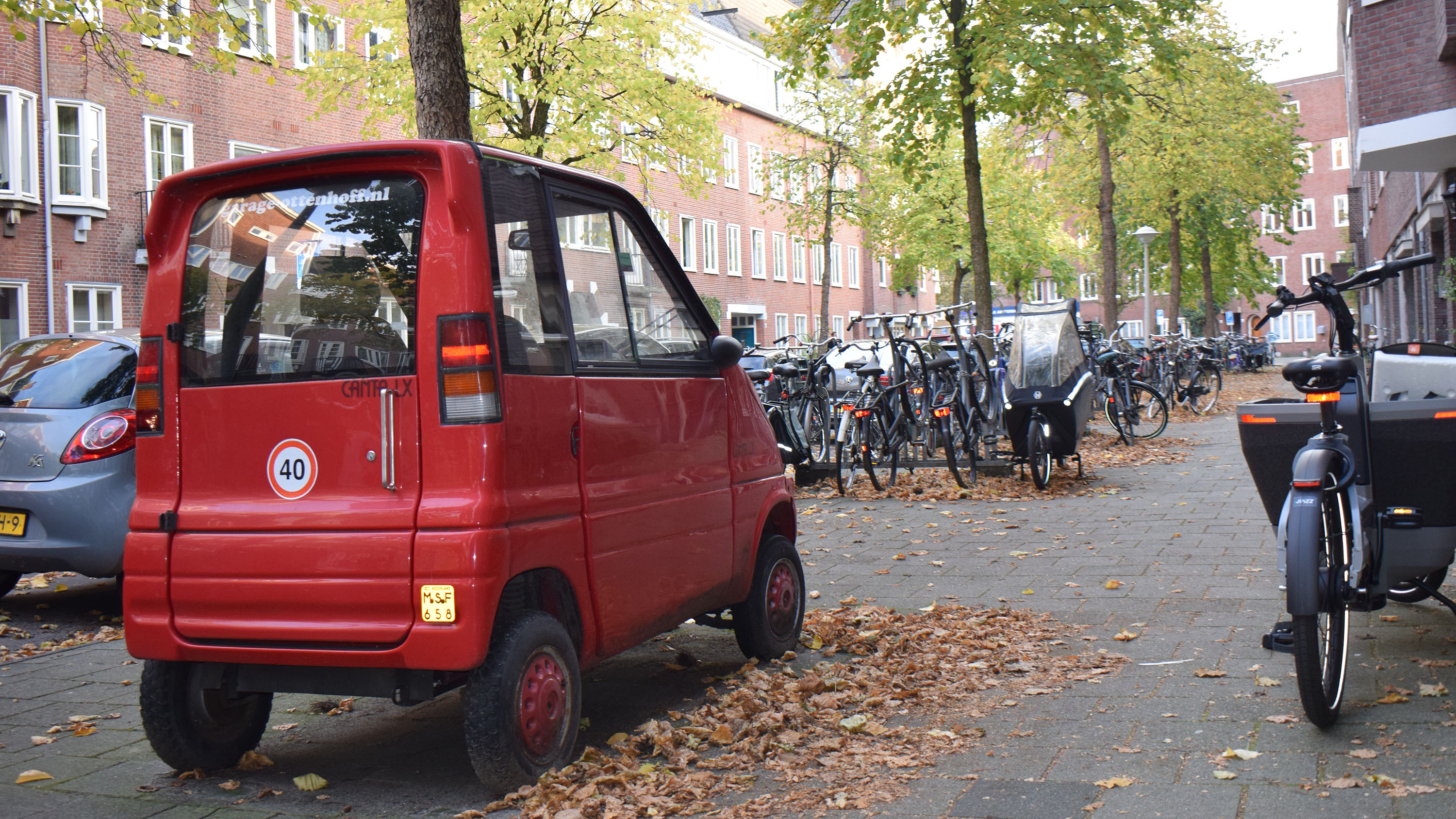This tiny Dutch vehicle for people with disabilities is taking off
The Canta is a compact four-wheeled, two-seat microcar that's unlocking micromobility in the Netherlands.

The Netherlands is known internationally for its bicycle culture. Now it’s also home to another, more broadly accessible form of transportation: the Canta.
For people with disabilities in the country, the compact four-wheeled, two-seat vehicle has become the primary form of micromobility—a term encompassing a range of small, lightweight vehicles typically operating at around 15 miles per hour. The Canta looks a bit like a little Fiat or Mini and has all the main features of a car: engine, drivetrain, roof, windows, and doors. But it is an especially compact one: it is a microcar that measures just over three feet wide, making it narrow enough to be driven in the country’s wider bike lanes while also being able to accommodate wheelchairs and other mobility aids.
Designed specifically for people with disabilities, the Canta was created in 1995 by a small Dutch vehicle manufacturer called Waaijenberg Mobility. It operates at speeds typically below 45 kilometers (27.9 miles) per hour and is not allowed on major motorways.
“We started manufacturing the Canta because there was a demand,” says Frank Vermin, owner of Waaijenberg Mobility. Many of their customers, he explains, were unable to obtain a driver’s license owing to their disability. Canta may look like a car. But it is classified as a mobility device, which means people can “get mobility from door to door” without needing a license.
The various Canta models are customizable, allowing the vehicle to meet the mobility needs of a broad range of riders, including wheelchair users. The Canta 2 Inrijwagen, for example, has no seats and lowers down to allow a wheelchair to roll in through a door at the back. Different types of controls for gas or brakes can be installed to suit the driver. The Canta is not the only microcar that can be seen driving around the Netherlands, but it is only the only one with these accessibility adaptations and advantages.
The cars range in price from around €15,500 for the Canta Comfort to more than €23,000 for the Canta 2 Inrijwagen.
Older models of the Canta were gas-powered, but the latest model is electric, in line with municipal efforts. Amsterdam, for example, aims to be an emissions-free city by 2025. Micromobility can and must play a big role.
“When we look at non-cars, a vast space of opportunity for mobility solutions becomes possible,” says Horace Dediu, an expert on the future of micromobility. “This means not just more efficient and less demanding alternatives for short trips, but also vehicles for those who are too young, too old, or disabled.”
Dediu notes that “8 billion people need mobility. Only 1 billion currently can drive.” Everyone, he says, “will be served by micromobility.”
Deep Dive
Humans and technology
Building a more reliable supply chain
Rapidly advancing technologies are building the modern supply chain, making transparent, collaborative, and data-driven systems a reality.
Building a data-driven health-care ecosystem
Harnessing data to improve the equity, affordability, and quality of the health care system.
Let’s not make the same mistakes with AI that we made with social media
Social media’s unregulated evolution over the past decade holds a lot of lessons that apply directly to AI companies and technologies.
Stay connected
Get the latest updates from
MIT Technology Review
Discover special offers, top stories, upcoming events, and more.